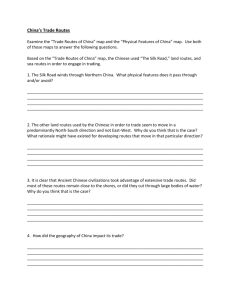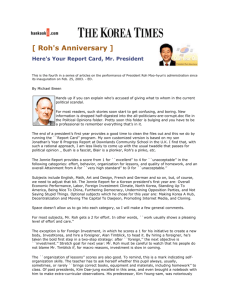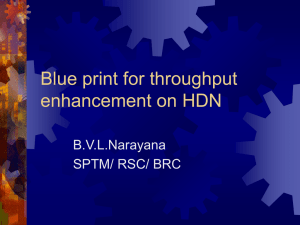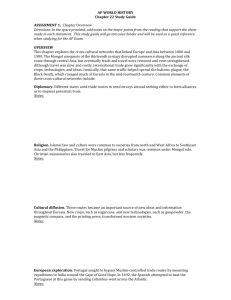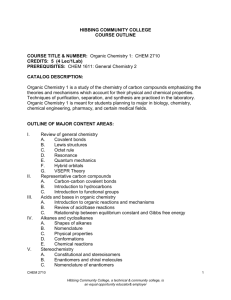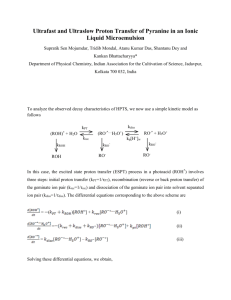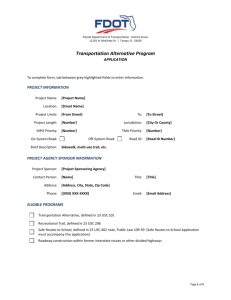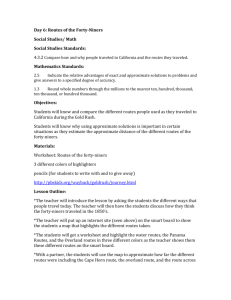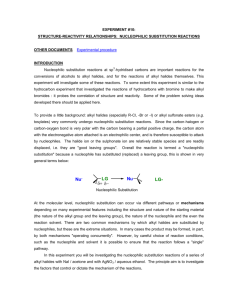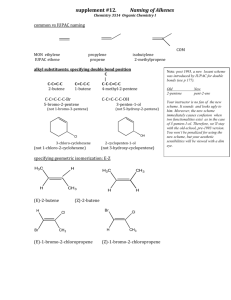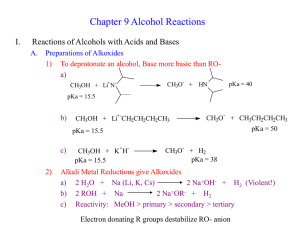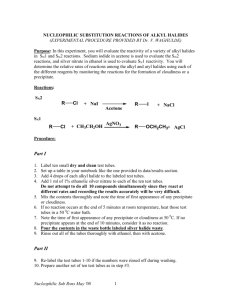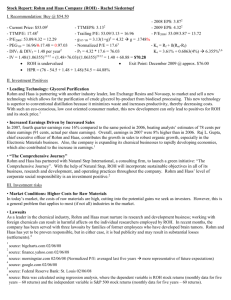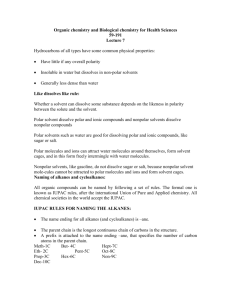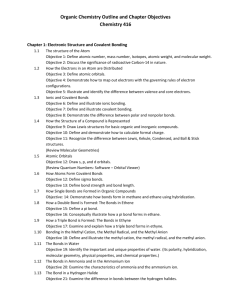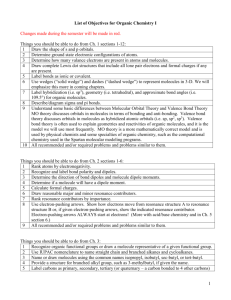Summary of Some Reactions to Form Alkyl Halides (RX)
advertisement
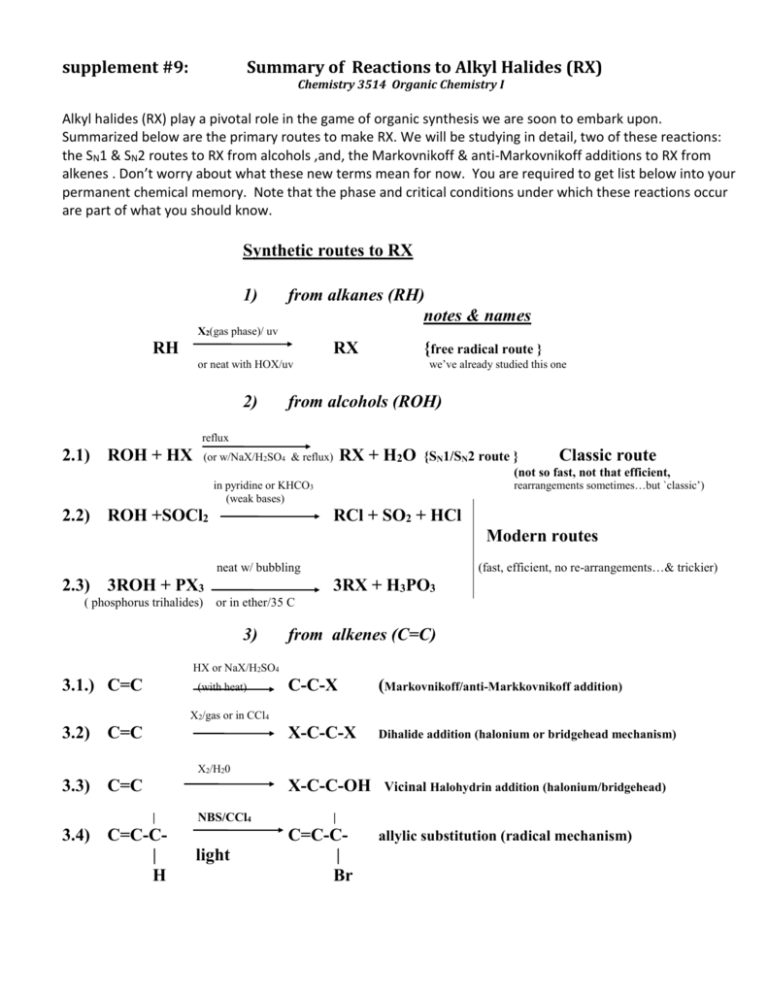
supplement #9:
Summary of Reactions to Alkyl Halides (RX)
Chemistry 3514 Organic Chemistry I
Alkyl halides (RX) play a pivotal role in the game of organic synthesis we are soon to embark upon.
Summarized below are the primary routes to make RX. We will be studying in detail, two of these reactions:
the SN1 & SN2 routes to RX from alcohols ,and, the Markovnikoff & anti-Markovnikoff additions to RX from
alkenes . Don’t worry about what these new terms mean for now. You are required to get list below into your
permanent chemical memory. Note that the phase and critical conditions under which these reactions occur
are part of what you should know.
Synthetic routes to RX
1)
from alkanes (RH)
notes & names
X2(gas phase)/ uv
RH
RX
{free radical route }
we’ve already studied this one
or neat with HOX/uv
2)
from alcohols (ROH)
reflux
2.1) ROH + HX
RX + H2O
(or w/NaX/H2SO4 & reflux)
{SN1/SN2 route }
Classic route
(not so fast, not that efficient,
rearrangements sometimes…but `classic’)
in pyridine or KHCO3
(weak bases)
2.2) ROH +SOCl2
RCl + SO2 + HCl
Modern routes
(fast, efficient, no re-arrangements…& trickier)
neat w/ bubbling
2.3) 3ROH + PX3
( phosphorus trihalides)
3RX + H3PO3
or in ether/35 C
3)
from alkenes (C=C)
HX or NaX/H2SO4
3.1.) C=C
(with heat)
C-C-X
(Markovnikoff/anti-Markkovnikoff addition)
X-C-C-X
Dihalide addition (halonium or bridgehead mechanism)
X2/gas or in CCl4
3.2) C=C
X2/H20
3.3) C=C
X-C-C-OH
|
3.4) C=C-C|
H
NBS/CCl4
light
Vicinal Halohydrin addition (halonium/bridgehead)
|
C=C-C|
Br
allylic substitution (radical mechanism)
